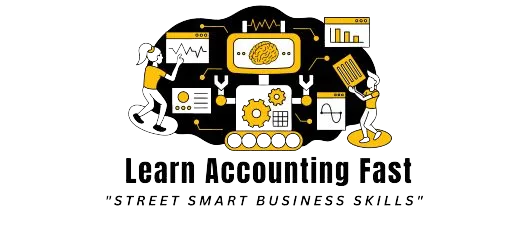How To Create
Financial Projections
Life is unpredictable, and hitting hard times is something many of us may face at some point.
Whether it’s financial difficulties, personal loss, or professional setbacks, navigating through challenging periods requires resilience and practical steps.
This guide will walk you through the steps to create accurate and useful financial projections.
Plus, we’ll share some secrets that wealthy individuals use to stay ahead.
Step 1: Understand Financial Projections
Financial projections are estimates of future financial outcomes. They help in budgeting, planning, and making informed decisions. They are vital for personal finances and business operations.
Step 2: Gather Your Data
Start by collecting all relevant financial data.
For personal finances, this includes income, expenses, savings, and debts. For businesses, gather revenue, costs, profits, and investment data. Use past financial statements as a base.
Step 3: Use Financial Projection Tools
Several tools can help you create financial projections:
Excel or Google Sheets: These are great for creating custom projections. Use templates for budgeting and financial forecasting Excel Templates, Google Sheets Templates.
Online Calculators: Websites like Calculator.net offer financial projection calculators.
Financial Software: Tools like QuickBooks provide robust features for financial planning.
Step 4: Estimate Future Revenue and Income
For personal finances, consider your salary, bonuses, and any other income sources.
For businesses, estimate sales based on market research and past performance. Factor in potential growth or declines.
Step 5: Forecast Expenses

Forecasting expenses involves listing all costs over a period.
For personal finances, include fixed costs like rent and utilities, variable costs such as groceries and transportation, and periodic expenses like car registration.
For businesses, consider operational costs (rent, utilities), employee costs (salaries, benefits), and marketing expenses.
Include variable costs like raw materials and shipping, and set aside funds for unexpected costs.
Use historical data, market research, and expert advice to ensure accuracy, and regularly update your forecasts.
Step 6: Create Different Scenarios
Wealthy individuals often prepare for multiple outcomes. Create best-case, worst-case, and most likely scenarios.
This helps in understanding risks and opportunities. Adjust your projections for each scenario.
Step 7: Monitor and Adjust Regularly
Financial projections are not static.
Review and adjust them regularly. Compare your actual performance against your projections to spot trends and make necessary changes.
Secrets of the Wealthy
Multiple Income Streams: Wealthy individuals often have various income sources. This could be through investments, side businesses, or real estate. It helps in diversifying risk.
Tax Planning: They use tax-efficient investment strategies. Consult a tax advisor to explore options like retirement accounts and tax deductions.
Investing in Knowledge: Continuous learning is key. They invest in financial education to stay updated on market trends and investment strategies.

Conclusion
Creating financial projections is an essential skill for managing money effectively.
By following these steps and using the right tools, you can make accurate financial projections.
Remember to consider different scenarios and adjust your plans regularly.
Implementing secrets of the wealthy can further enhance your financialstability and growth.
For more tips and tools, visit Learn Accounting Fast
Resources:
With these steps and tips, you're well on your way to mastering financial projections and achieving financial success.
Now is the perfect time to invest in your greatest asset - YOUR BUSINESS AND FINANCIAL EDUCATION.
It's time to thrive in these trying times by taking advantage of this opportunity for personal growth.
Be the greatest you can be… Join us, click the link below for short, sharp, simple video courses that
give you confidence and street-smart business skills to succeed.
Latest Posts
The Six Laws of
Wealth Creation
The Six Laws of Wealth Creation. These timeless actions work in 2025’s rapid-change environment and give you calm, repeatable steps to grow money.....
How to Read Business
Financial Reports
A Story of Business Secrets Hidden in Reports
Sarah sat in her office staring at a thick folder of financial reports. Sales, costs, cash flow....
The Millionaire
Mind in Action
Timeless Wealth, Flow, and Power from Robert Kiyosaki,Frank Kern, Tony Robbins
and Open Ai......
Why Cost Control Is the Forgotten Key to Profitability
Most entrepreneurs chase sales growth like it’s the only thing that matters.They spend thousands on ads, new products, and fa ncy offices.....
Master Prompts For
Financial Analysis
The Complete Small Business Guide to Financial Analysis: Formulas, Examples, and Tips.These are super-powerful questions you can ask an AI to help..
How To Solve Any Business
Problem With Ai
AI can help you solve all of these faster, smarter, and more affordably, if you know how. This guide will show you exactly how to do that.........
Disclaimer: The content shared on this blog and in these videos is for informational and educational purposes only. Despite my 30 years of experience as a business owner, I am not a certified financial advisor, accountant, or legal professional. The insights and tips shared are based on personal experiences and should not be taken as professional financial or legal advice. For financial, legal, or professional advice, please consult with a certified professional in the respective field. I disclaim any liability or responsibility for actions taken based on any information found in this blog or these videos.
Copyright Learn Accounting Fast - All Rights Reserved 2025









Facebook
Instagram
X
LinkedIn
Youtube